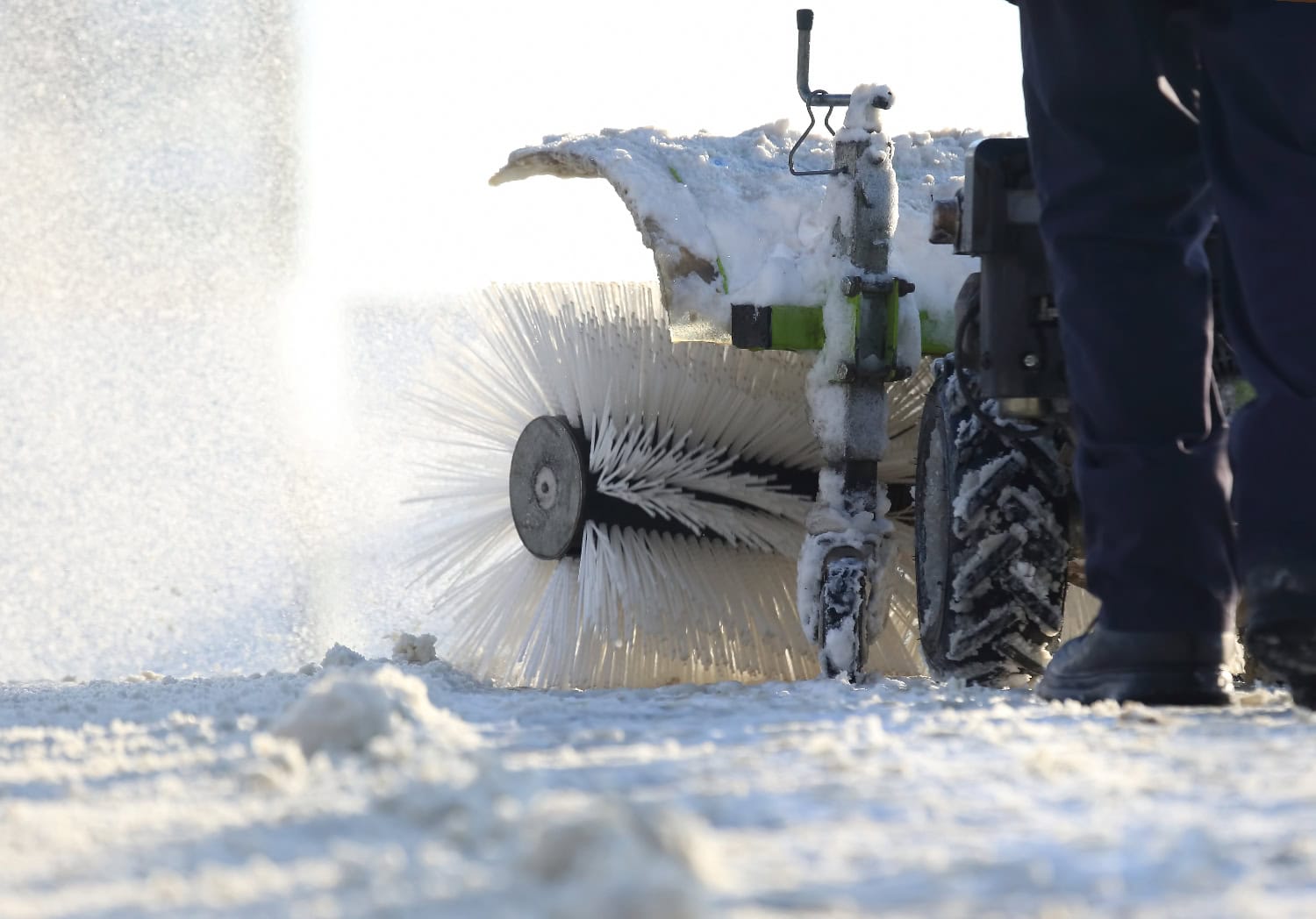Introduction: Winter’s Toll on Buildings
Minnesota winters are no joke. With heavy snowstorms, freezing temperatures, and icy conditions, buildings face challenges that can strain their structural integrity and operational efficiency. For facility managers, snowstorms aren’t just about shoveling sidewalks—they’re about preventing roof collapses, managing heating systems, and ensuring safety for tenants, employees, or visitors.
This guide examines the key challenges posed by snowstorms and offers practical solutions to keep buildings safe and functional throughout the harsh winter months.
The Challenges of Snowstorms for Building Maintenance
1. Roof Strain from Heavy Snow Loads
One of the most significant risks during a snowstorm is the weight of accumulated snow on roofs. In Minnesota, where snow loads can exceed 42 pounds per square foot in some areas, roofs can buckle under pressure if not properly maintained. Ice dams—caused by melting and refreezing snow—can further exacerbate the problem by trapping water and causing leaks.
- Signs to Watch For:
- Sagging rooflines or creaking sounds.
- Water stains on ceilings caused by leaks.
- Large icicles are forming along the roof edges (a sign of ice dams).
2. Slippery Walkways and Entrances
Snowstorms often leave walkways, parking lots, and building entrances covered in ice and snow, creating hazardous conditions for anyone accessing the property. Slip-and-fall accidents are a safety concern and a liability risk for businesses.
- Key Risks:
- Ice patches form overnight due to melting and refreezing cycles.
- Inadequate salting or sanding leads to reduced traction.
3. Heating System Failures
During extreme cold spells, heating systems work overtime to maintain indoor temperatures. This increased demand can expose vulnerabilities in boilers, furnaces, or HVAC systems, potentially leading to breakdowns when they’re needed most.
- Common Issues:
- Frozen pipes bursting due to inadequate insulation or heating failures.
- Uneven heating caused by clogged filters or ductwork leaks.
Actionable Steps to Tackle Snowstorm Challenges
1. Prioritize Roof Maintenance
Keeping your roof in good shape is non-negotiable during a Minnesota winter. Regular inspections and proactive measures can prevent costly repairs or structural damage caused by snow accumulation.
- What You Can Do:
- Clear snow regularly using roof rakes or professional services to avoid overloading the structure (but avoid uneven removal that could cause imbalances).
- Install proper insulation and ventilation to prevent ice dams from forming at roof edges.
- Ensure gutters are clean before winter starts so melting snow can drain properly.
Pro Tip: Always prioritize safety when working on roofs—use harnesses and avoid sending someone alone to clear heavy snow.
2. Keep Walkways Safe
Maintaining clear and safe walkways isn’t just about aesthetics—it’s about protecting everyone who uses your facility.
- What You Can Do:
- Shovel walkways immediately after snowfall and apply salt or sand to icy patches for better traction.
- Use heated mats or install heating systems in high-risk areas like stairwells or outdoor ramps to prevent ice buildup.
- Place warning signs near slippery areas until they’re fully cleared.
3. Winterize Your Heating Systems
Your building’s heating system is its lifeline during a snowstorm. Ensuring it runs smoothly is essential for maintaining comfortable indoor temperatures while avoiding costly breakdowns.
- What You Can Do:
- Schedule pre-winter HVAC inspections to identify potential issues before they escalate during peak usage.
- Insulate pipes in unheated areas like basements or crawl spaces to prevent freezing.
- Replace air filters regularly to improve airflow efficiency and reduce strain on your system.
4. Manage Snow Removal Effectively
Snow removal isn’t just about clearing paths—it’s about doing it safely and efficiently without damaging your property.
- What You Can Do:
- Use professional-grade equipment like plows or blowers for large parking lots or industrial spaces.
- Designate specific areas for piling removed snow from building foundations to prevent water seepage during melting.
- Avoid piling heavy snow near walls or fences that could collapse under added weight.
Pro Tip: Hire professional contractors for large-scale snow removal tasks—they have the expertise and equipment needed for safe operations.
Conclusion: Stay Ahead of Winter’s Challenges
Snowstorms are an inevitable part of life in Minnesota, but their impact on building maintenance doesn’t have to be overwhelming. By prioritizing roof care, keeping walkways safe, winterizing heating systems, and effectively managing snow removal, facility managers can protect their buildings from damage while ensuring safety for everyone who uses them.
For businesses seeking expert support with winter building maintenance, MN Services offers tailored solutions to handle Minnesota’s most demanding conditions. From proactive inspections to efficient snow removal services, we’re here to help you weather any storm—literally!
